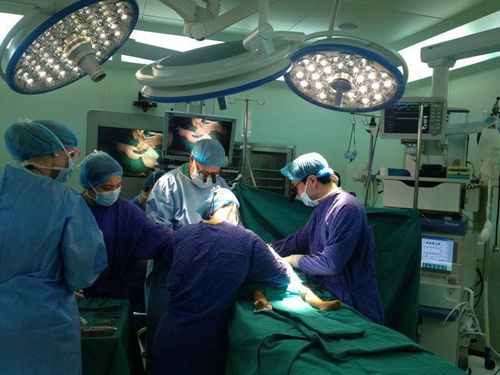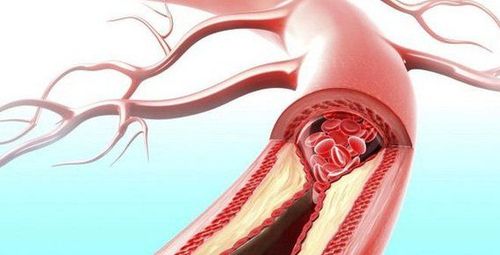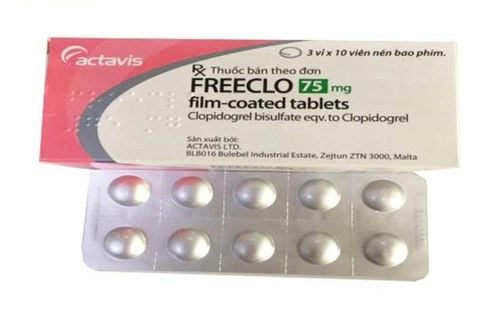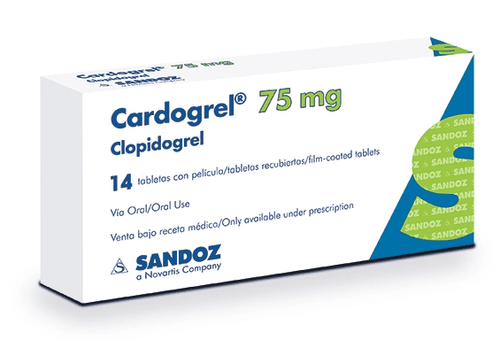This is an automatically translated article.
The article was professionally consulted by Specialist Doctor II Nguyen Quoc Viet - Department of Medical Examination & Internal Medicine - Vinmec Danang International General Hospital. The doctor has more than 20 years of experience in the examination and treatment of cardiovascular diseases and Cardiovascular Interventions (Including angiography, dilation, stenting of coronary arteries, renal arteries...), placing temporary pacemakers , forever...1. What is peripheral artery disease?
Peripheral artery disease refers to diseases of the arterial system. These arteries include distal arterial systems such as the lower extremities, the upper extremities, the renal arteries, and the carotid arteries.Peripheral artery disease is referred to as stenosis, incomplete occlusion, complete occlusion or aneurysm of one or more arterial segments causing symptoms of ischemia in extremities or organs. The main manifestation is claudication, pain, cyanosis, necrosis with different properties. If the disease is not detected early and treated promptly, it will lead to ischemia of the organ tissue behind the blood vessels, causing necrosis of the extremities, even amputation or removal of joints or related organs. The term Peripheral artery disease is often used to refer to the damage to the arteries of the extremities, the main mechanism of which is the phenomenon of atherosclerosis.
2. Peripheral artery disease risk factors
With the same mechanism as other vascular diseases, peripheral artery disease also has risk factors for disease such as:Age ≥ 60 years old, Smoking, Hypertension, Diabetes, Dyslipidemia Obesity Autoimmune disease, collagen disease There is a family with arterial diseases. In particular, smoking, diabetes and dyslipidemia were identified as the strongest risk factors that were closely associated with peripheral artery disease.

3. Common manifestations in people with peripheral artery disease
Maybe the disease is asymptomatic Pain will be the most common symptom with different levels and characteristics Chronic pain, constant pain, dullness that goes on for a long time Intermittent pain sign: Pain Cramps in the calf appear after walking for a while, the patient must stop to rest before continuing, the pain decreases or goes away when resting for less than 10 minutes. If the artery is completely blocked, the leg will be very painful and limit the patient's mobility. Numbness, decreased sensation, cramps, pain in the affected area. Paleness is a common symptom, accompanied by black necrotic spots, dry necrosis at the tip of the extremities, with signs of necrosis, nail hypotrophy. Cold, colder than the healthy limb but not as cold as acute ischemia (due to the formation of new feeding branches). If there is an ulcer, it often takes a long time to heal, leading to gangrene. Necrosis in chronic lower extremity artery disease can be seen with black, dry necrosis, with little surrounding inflammation and edema. Some other manifestations such as muscle weakness, paresthesia, sadness, impotence to move the limbs, cramps many times even at rest. For men, impotence can occur if the blood vessels that carry blood to the penis are blocked. There may be abdominal pain after meals if there is stenosis or occlusion of the abdominal blood vessels such as the mesenteric artery, the splanchnic artery, and the renal artery.
4. Treatment of peripheral artery disease
The treatment aims at two basic purposes: Improve symptoms and prevent dangerous complications of pathology on the arterial system.Quitting smoking, waterpipe: Support and counseling to quit smoking during each follow-up examination and treatment; develop an appropriate quitting plan; avoid exposure to environments where tobacco is used frequently (group contact with tobacco use, pipe tobacco). Improve diet, assist in regulating blood lipid levels and treat dyslipidemia. Coordinate rehabilitation exercises, exercise exercises under the supervision of medical staff about 3-4 times / week, each time lasting 30-45 minutes depending on the severity of the disease and the patient's ability and should last at least 12 weeks. It is recommended that this measure can improve symptoms and increase walking distance. Control comorbidities: Diabetes, hypertension, coronary artery disease if any. Advise diabetic patients fully on complications, especially tight control of foot complications. Support pain relief with analgesics or vasodilators suitable for each stage of the disease. Specific amputation may be considered in cases of severe necrosis, with the risk of total damage. Measures of reperfusion/revascularization: Revascularization is an appropriate indication recommended for patients with severe complications, manifestations of limb ischemia that do not improve nor are ability to control adverse factors and comorbidities. These include the following key measures: + Catheter revascularization or percutaneous vascular intervention: one uses a series of catheters, inserted through the skin into the blood vessel, using balloons and needle brackets A stent is placed in the lumen to re-establish blood flow. This method is recommended for use in most cases of peripheral artery disease today, especially in pre-amputation and prosthetic cases.
+ Arterial bypass surgery : This method uses an autologous blood vessel from another location on the body or an artificial vessel that is grafted by the surgeon from above the lesion to below the lesion. (bypass) to supply blood to the lower extremities through the vessel to be used instead.

Please dial HOTLINE for more information or register for an appointment HERE. Download MyVinmec app to make appointments faster and to manage your bookings easily.














